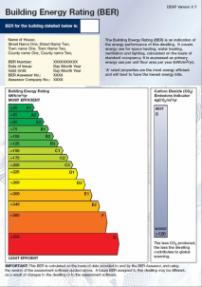Air Tightness Installation
Air & Wind Tight Construction
As certified experts on Air Tightness Installation we at SC Air Tightness & Ventilation can make your dwelling more energy efficient. ‘Build it Tight, Ventilate it Right’. With our fully trained team, not only do we install, but on completion we carry out an air tightness test on the property. This will give you peace of mind that the work has been carried out correctly and ensure that we keep our work to the high standards we set ourselves.
Since 2007, the building regulations in Ireland (TGD Part L) state that there is a reasonable upper limit for this infiltration. In 2007 this figure was 10m3/m2/hr @50Pa. This has been reduced in the 2011 TGD Part L to 7m³/m²/hr @50Pa. As these figures are considered as reasonable upper limits, we can look to international standards for good (5m³/m²/hr) and best practice (3m³/m²/hr).
We strive to ensure your building achieves below 3m³/m²/hr, through previous projects we have achieved ratings below 1m³/m²/hr to passive house standards.
Why make your home air tight?
We all know how important it is to protect our environment and preserve natural resources. The CO² consumption of the industrial nations is continuously increasing, earth is heating up and the climate changing.
We at SC Air Tightness & Ventilation are aware of our ecological responsibility and make a huge contribution to the protection of our environment. But we also protect your wallet.
With our air tightness systems, you can save a lot of energy after building or renovation of a house. Thanks to a thoroughly sealed air and windtight building envelope heat stays where it belongs - in the house. Contrary to an incomplete sealing, this will considerably reduce your heating costs.
The heating is by far the greatest energy guzzler in our households. A gap of one millimetre width and one metre length already reduces thermal insulation in this area by about 40%. A properly sealed airtight layer will reduce your heating costs by about a 1/3. Together with the reduced thermal loss your CO² emission will drop. So kill two birds with one stone: save cash and simultaneously counteract the climate change!
Shown below is the air tightness system installed on previous projects.
Benefits:
![]() Prevents unpleasant draughts – creates a cosy and comfortable home
Prevents unpleasant draughts – creates a cosy and comfortable home
![]() Saves up to 35% heating costs – reduces CO² emissions and gives the dwelling a good building energy rating
Saves up to 35% heating costs – reduces CO² emissions and gives the dwelling a good building energy rating
![]() Complies with Building Regulations – boosts the resale or rental value of the property
Complies with Building Regulations – boosts the resale or rental value of the property
![]() Protection against outdoor odours and noise – results in a relaxing and restful home
Protection against outdoor odours and noise – results in a relaxing and restful home
What impact does air tightness have on the Building Energy Rating (BER)?
Air permeability is a key factor in assessing the Carbon Dioxide emissions and Building Energy Rating of a dwelling.
Air permeability levels better than the required upper limit of 7m³/hr/m², will help to achieve an improved BER. Thus reducing the consumption of additional energy required to maintain internal temperatures due to the conditioned internal air escaping and unwanted cooler/warmer air infiltrating the building envelope.

Click here for SIGA Majrex passive cert
Click here for SIGA Agrement Cert



